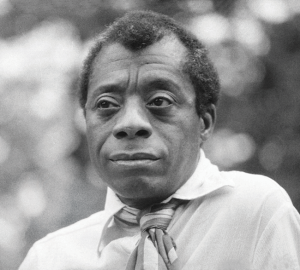Humanist Profile: James Baldwin
 James Baldwin (Photo by Allan Warren via Wikimedia Commons)
James Baldwin (Photo by Allan Warren via Wikimedia Commons) February is Black History Month in the United States and Canada. In commemoration we bring you the second in a four-part series highlighting fascinating and influential black humanists. Part one, a profile of writer and activist Ijeoma Oluo, is here.
James Arthur Baldwin was born on August 2, 1924, in Harlem, New York, to a single mother, Emma Jones. She never told her son the name of his biological father, who she’d left because of his drug abuse. When James was three years old, Emma married a factory worker and Baptist minister named David Baldwin, with whom she had eight more children.
As a student in New York City public schools, James Baldwin was an avid reader and a gifted writer. He was the editor of the newspaper at Fredrick Douglass Junior High and a literary editor for his high school magazine, for which he wrote numerous plays, poems, and short stories. At home he was treated cruelly by his stepfather, and as an adult he recalled turning to religion as a refuge.
At fourteen, Baldwin became a popular preacher at the Fireside Pentecostal Assembly in Harlem. He was also spending time with poets and painters in Greenwich Village, writing in between odd jobs, and discovering himself as an artist and a gay black man. At seventeen, he rejected Christianity, writing in his 1963 book, The Fire Next Time, that “being in the pulpit, was like being in the theatre; I was behind the scenes and knew how the illusion worked.”
In 1949 Baldwin moved to France, disillusioned by racial prejudice in the United States. Known for his groundbreaking explorations of identity, race, and class, Baldwin published his first novel, Go Tell It on the Mountain, in1953 and his essay collection, Notes on a Native Son came out two years later. His second novel, Giovanni’s Room, was controversial for its homoerotic content. An artist of many facets, Baldwin would become known not only as a prominent black writer, but as a gay writer and an exile writer. In all, he wrote six novels, two plays, numerous essay and poetry collections, and collaborated on other projects with well-known artists, poets, and musicians.
Returning to the United States in 1957, Baldwin became the leading literary voice of the civil rights movement. In a historic debate with William F. Buckley Jr. at Cambridge University in 1965, on the question: “Is the American Dream at the expense of the American Negro?” Baldwin, with his usual laser-like eloquence, talked about being born black in America:
Since you don’t know any better, every stick and stone, every face, is white, and since you have not seen a mirror, you suppose that you are too. It comes as a great shock around the age of five or six or seven to discover that…the country which is your birthplace, and to which you owe your life and your identity, has not in its whole system of reality evolved any place for you.
Baldwin returned to France in 1970 and continued to write and spend time with acclaimed artists and thinkers. At the time of his death from stomach cancer in 1987, he was working on a book recalling his civil rights involvement and his friendships with Medgar Evers, Malcolm X, and Martin Luther King Jr. The unfinished manuscript became the basis for a documentary by Haitian filmmaker Raoul Peck called I Am Not Your Negro (US release: February 3, 2017).
In his review of the film published at TheHumanist.com, Sincere Kirabo wrote, “Baldwin’s poetic potency proves timeless as it continues to enter our core, cozy up to our beliefs, confront harmful opinions we have of the world and others, and demand a more just reckoning.” While Baldwin never reached the same level of notoriety as other civil rights leaders, the film shines a light on a man who was, first and foremost, an artist in search of the truth. In his words, “Life is more important than art, that’s what makes art important.”
